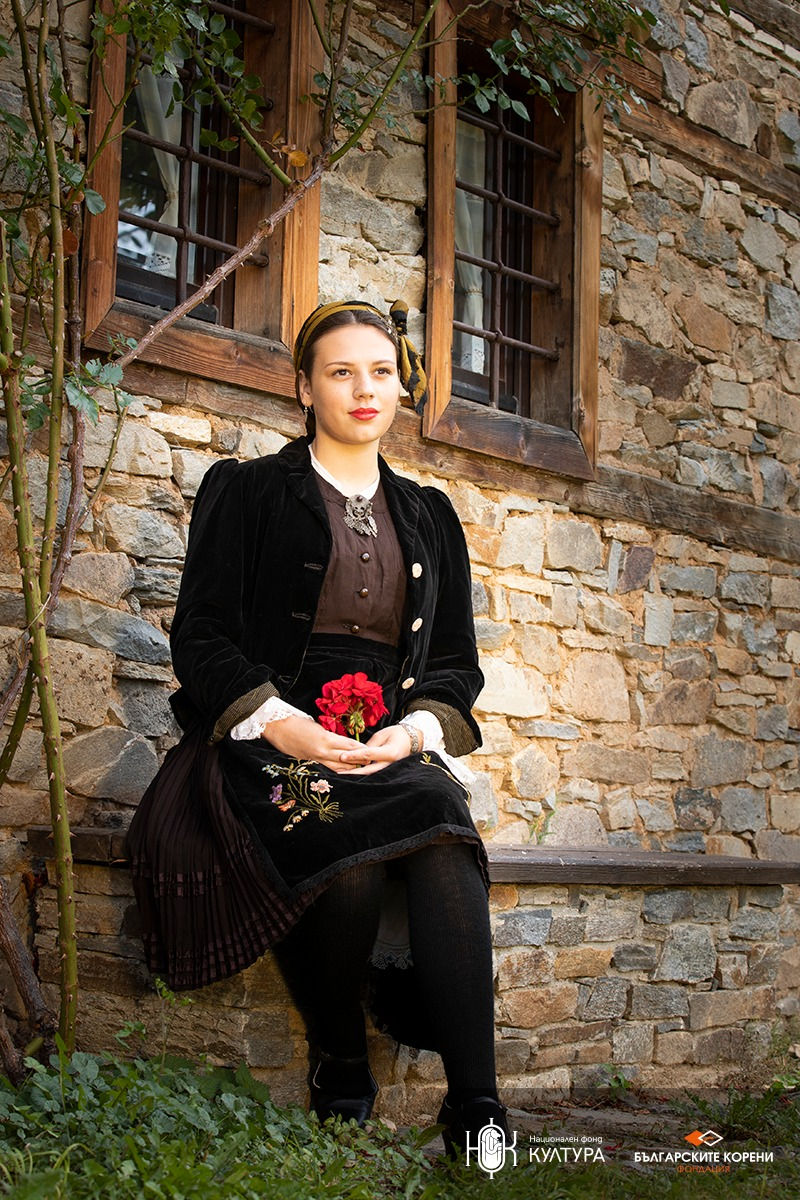Urban costume from Razlog, early XX century
- Грозделина Георгиева-Саватинова

- Jul 2, 2021
- 2 min read
Updated: Nov 8, 2021
20s of the twentieth century

This girl is dressed in short shirt (koshulya), which is covered by the outwear, with small raised collar and rich lace on the sleeves. Above is with finely pleated brown foustan – named “geziya” (local name – dzhiziya), made from fabric colored cotton yarn, decorated with two or three satin ribbons from lighter cloth at the skirts. Dzhiziyata has a closed upper part of the bosom.
The waist is girded with a festive velvet apron (futa) with embroidered flowers and black lace at the edges.

To compensate for the short shirt and "foustan", socks become taller - black or white, up to above the knee. She is wearing a black velvet “contosh” with a feminine narrowing at the waist.

On the head has a veil - "parlenda" (made of thin cotton or silk fabric framed with black lace), the ends of which cross at the back and are tied at the nape of the neck. The bosom is decorated with a silver button - a metal circle with openwork metal plates hanging from below, and under the "jufka" of the veil there is a silver chain with diamond-shaped plates that rings when moving.

Both hands are decorated with bracelets. All metal jewelry has a decorative and apotropaic role, to protect its wearer from “uroki” and evil eyes. Except metal, silver is also white, which reflects the gaze or thoughts and returns them to their source, on the principle of a mirror. Perhaps these deep-rooted beliefs made silver a favorite metal during the Renaissance for the master goldsmiths who made women's “gizdila”.

Due to its comfort and feminine appearance, it became a favorite garment in the Razlog region until the middle of the twentieth century. At modern dance parties, women dressed in skirts danced European dances. The images in the old photos show how girls of the same age were photographed in a costume - traditional for the area, and a “fusta” with “contosh”. Such a mixture reveals to us the diversity of understanding, tastes, lifestyle, social status, but also the level of emancipation in these mountainous areas.
\This festive clothing is typical for ready-to-marry girls, who so prepared, went to the megdan, to the round dance, went to an engagement or a wedding, etc.
Lachezara Pramatarova from Razlog put on the costume. The costume is from the fund of the Historical Museum - Razlog.
The project "Study of the specifics and richness of national costumes from the Razlog region in the light of cultural diversity" is realized with the financial support of the National Culture Fund under the program "Cultural Heritage".
In fulfillment of the goals of the project we present some of the most beautiful traditional costumes, typical for the Razlog valley in the last 2 centuries.
We offer our sincere thanks to our hosts from the Historical Museum - Razlog, and to all local people who helped with the realiz
ation.
Special thanks to all participants and team members who took their time and with useful information, knowledge and valuable advice made possible the work on the project. A reverence to the girls and boys from the town of Razlog, who stood in front of our camera and with their enthusiasm, youth and beauty revived for a new life the most beautiful costumes from old Mehomiya.
























Comments